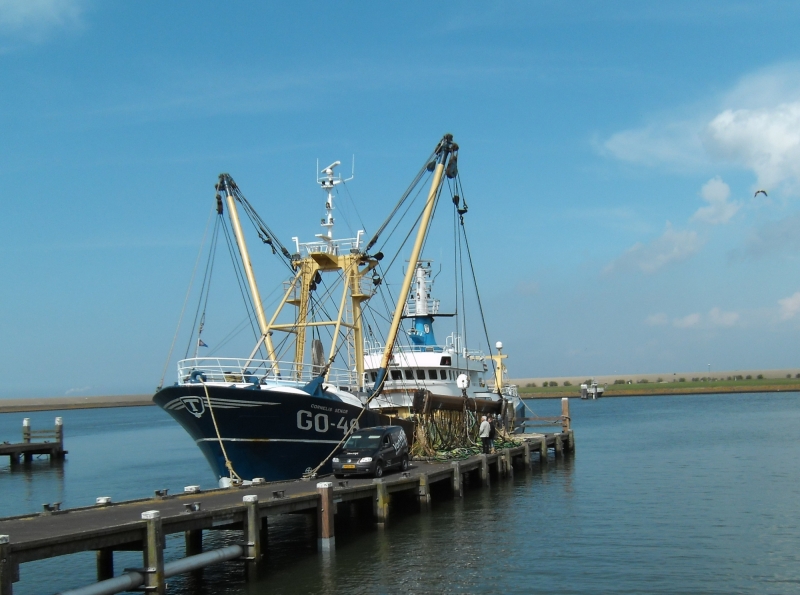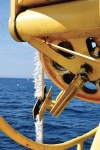Fairing
Fairing
For the development of the new feeder cable various goals were set. The vibration of the cable had to be counteracted and its resistance in the water had to be reduced. In addition to the reduction of the diameter, the application of fairing would contribute to this.
Vibration of the feeder cable is a well-known problem that also occurs in marine research equipment, but also on land. A familiar example is the vibration of bridge guy-wires in the wind. This vibration is caused by turbulence behind the cable in a flowing medium (wind, water). For this project, fluid dynamics experts from Delft University of Technology were consulted. The occurrence of vibration depends on the following variables:
- Specific weight of the cable
- Specific weight of the medium (in this case: water)
- Cable diameter
- Tension on the cable
- Rate of flow alongside the cable
There was a chance that the new cable would not experience vibration due to its smaller diameter. In initial tests with the new cable, this proved not to be the case. Even small variations in speed and tension did not reduce vibration substantially.
Desk research in databanks with patents was performed in order to find a solution. Fairing is the most effective method against cable vibration in the water. There are various fairing systems for cables in the water. There are two main fairing types:
- Hard fairings. The cable with hard elements is fitted with teardrop shaped elements. This streamlines the cable. The disadvantage of hard fairing is that special equipment is needed to haul up the cable.
- Hairy fairings. Synthetic foil flaps or wires are fitted on the cable. They drag behind the cable and reduce turbulence. These hairy fairings can easily be wound up with a regular winch.
There is no consensus on which part of the cable length should be fitted with fairing. In some cases it suffices to fit the lower half of the cable underwater with fairing. For other purposes, the entire cable is fitted with fairing.
After consultation with several suppliers and De Regt Marine Cables it was decided to fit part of the cable with dyneema fibre (ultra high molecular weight polyethylene fibre). The fairing is fitted around the cable like a woven stocking. This operation should take place in a factory.
On 20/7/2012, a new pulse cable (De Regt Marine Cables) was wound up on the starboard side of the TX68 by Delmeco Fishing Technology. This cable is fitted with so-called hairy fairing. Comparative research was performed on the TX68 by fishing with the new fairing cable and the old feeder cable. Tensile forces and vibrations were being observed. The main goal of this experiment was to establish how the fairing should ideally be fitted (length, position) for optimum reduction of vibration.
Conclusions:
- Hairy fairing is a highly effective means to prevent feeder cable vibration.
- The whole length of the feeder cable should be fitted with fairing.
- The fairing could be wound up easily.
- The fairing hardly influenced the measured resistance of the cable in the water.



